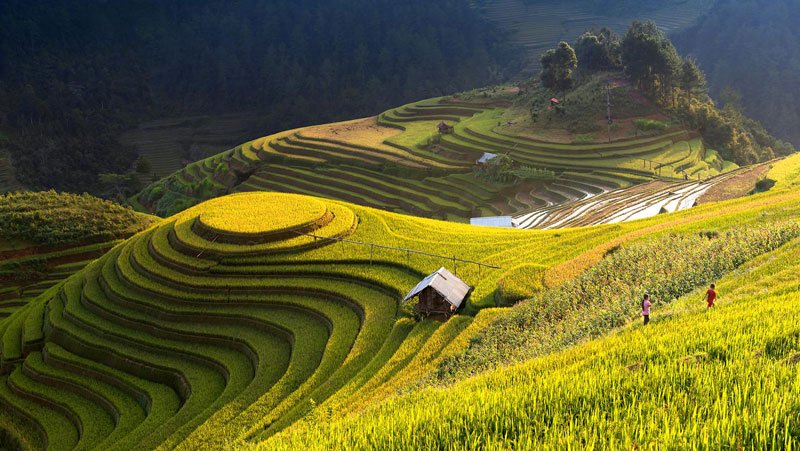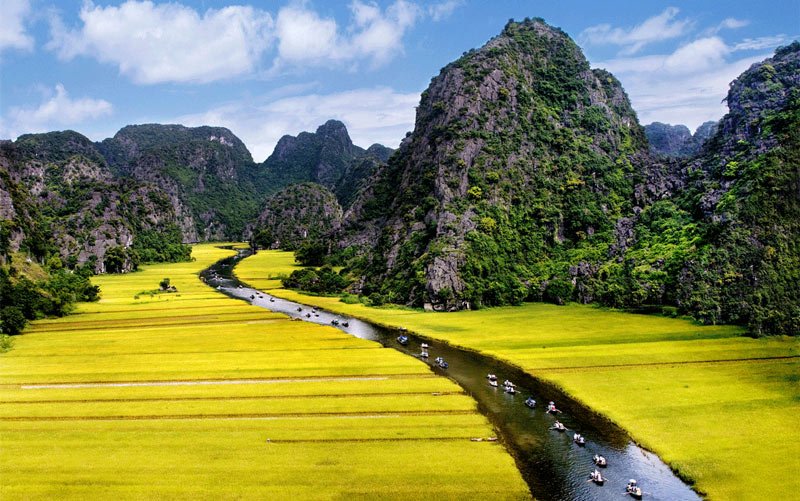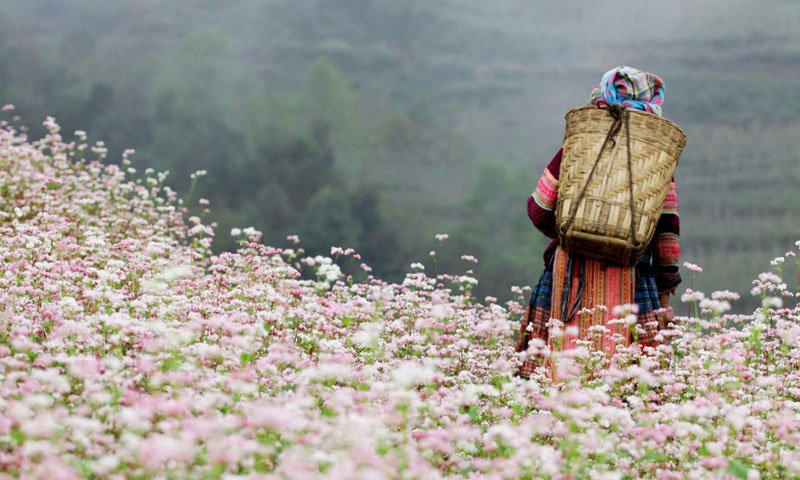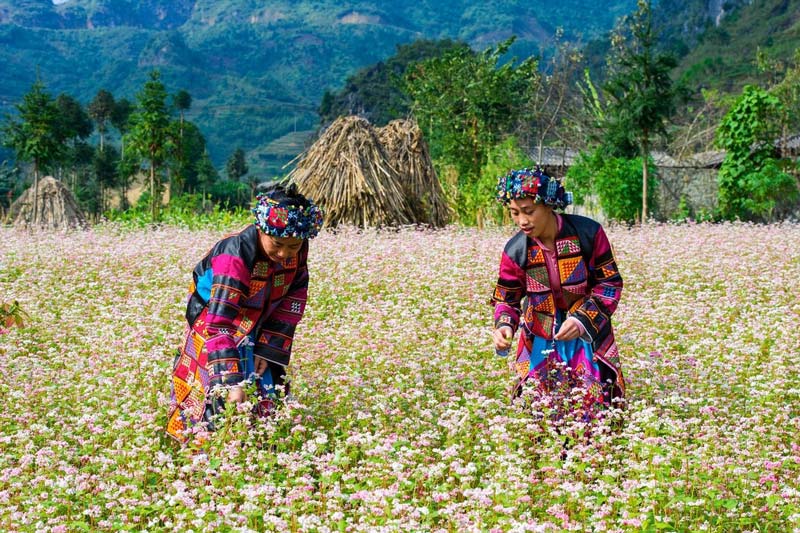Tourists often regard it as one of the most beautiful places in Vietnam.
Located near the Chinese border, Ha Giang offers unique scenery in the land of Uncle Ho: steep cliffs, lush landscape and a foggy atmosphere. This wild and mountainous region, rich in ethnic minorities, is quite outstanding.
The road winds endlessly between mountains. Below, small plots of rice or corn are lost in the rocky vastness and silence that characterises this region. At the top, perched out of site, are sharp mountain peaks wrapped in a belt of clouds.

And from time to time, round a corner, one can glimpse the brightly coloured clothing still proudly worn by locals. Ha Giang is a compendium of contrasting colors, fresh air and surprising encounters. Even if its eponymous capital does not have a lot of interest, it is the gateway to one of the world’s 91 UNESCO-listed parks: Dong Van park, located 130 km north of the city.
This huge massif consists of limestone peaks, deep valleys and canyons, populated mostly by black Hmongs, an ethnic group with Chinese origin. But they are not the only ones. An estimated population of over 250,000 people live within the region, including 17 different minority groups. Here, Hmong, Hoa, Ray, Tay and Nung people have lived together for a long time.

Situated in the heart of the park, Dong Van city, whose old quarter is an architectural relic, includes forty old houses built during the 19th century after the French took control of the region and set up local government. Often composed of one or two floors, with Ying-Yang style tiled roofs and mud walls, these buildings have resisted time and weather.
The central point of the city, the old market, near which men wearing black berets and women in traditional dresses gather, was built in stone from 1925 to 1928. The market’s rough and poetic charm reflects the area: beautiful, still untamed, with living conditions that remain difficult for the vast majority of people.
Near the northern border of Vietnamese territory, Lung Cu town is another must-see location on the Dong Van plateau. Its main attraction is a tower perched on Mount Rong (“Dragon”), on which floats a 54m² flag (9m x 6m), symbolizing the 54 ethnic groups of Vietnam.

This area, nicknamed “The roof of Vietnam”, is of great significance in terms of national sovereignty. It is in this region that the People’s Republic of China attacked Vietnam on February 17, 1979, following the entry of the Vietnamese army into Cambodia.
Further on, 60 km away from the city of Quang Tan and 100 km from the capital city of Ha Giang, is Hoang Su Phi, one of the most unspoiled Vietnamese provinces with impressive landscapes of rice terraces and steep ravines. Generations of farmers in six towns (Ban Luôc, San Sa Hô, Ban Phùng, Hô Thâu, Nâm Ty and Thông Nguyên) have reshaped surrounding hills to grow rice. The landscape is incredible.
Meo Vac is a small town of a few thousand inhabitants, located dozens of kilometers away from Dong Van, in the far north of Vietnam. It is lost in a valley surrounded by high limestone mountains. For many Vietnamese, the name of Meo Vac evokes the far end of the world.
The city is organised around a market filled with Chinese products. Streets are narrow, with plenty of typically low houses found in most of the mountain cities. Even though it has no monuments or special sites to visit, the path to go there is worth a visit. Roads from Yen Minh to Dong Van and from Ding Van to Meo Vac are indeed among the most spectacular and sensational of Vietnam.

Once you are in Meo Vac, do not miss going to Khau Vai to visit a market that bears the sweet name of “love market”. Here a great traditional festival is held once a year, on the 27th day of the third moon (according to the lunar calendar) where people come to reconnect for a day with the love of their youth. The legend states that there was once a young couple from two different tribes who fell madly in love.
The beautiful young woman fervently wished to marry her fiancé but her family opposed her decision, and refused to allow a wedding with a man from another tribe. Their farewells were heartrending, but the couple could not choose to never meet again, so they decided to reunite once a year, on the 27th day of the third lunar month, which is now the day for all old lovers throughout the region.
Named the World Geological Park in 2010, Ha Giang province is experiencing a rise in visitors but it is still isolated compared to major tourist destinations. However, things could change in the coming years. Provincial authorities are constructing plans to build several casinos and a golf course on this natural site.






